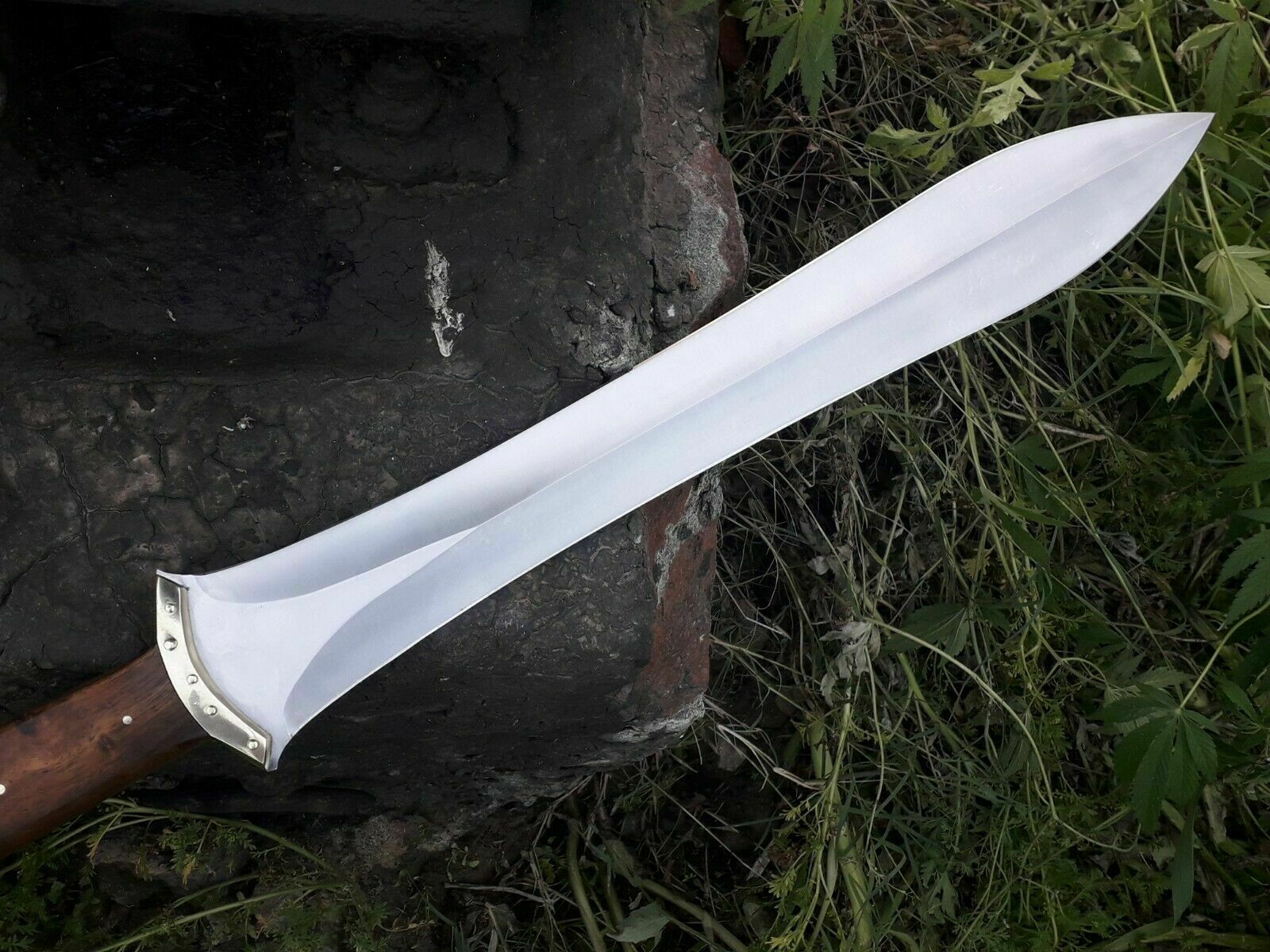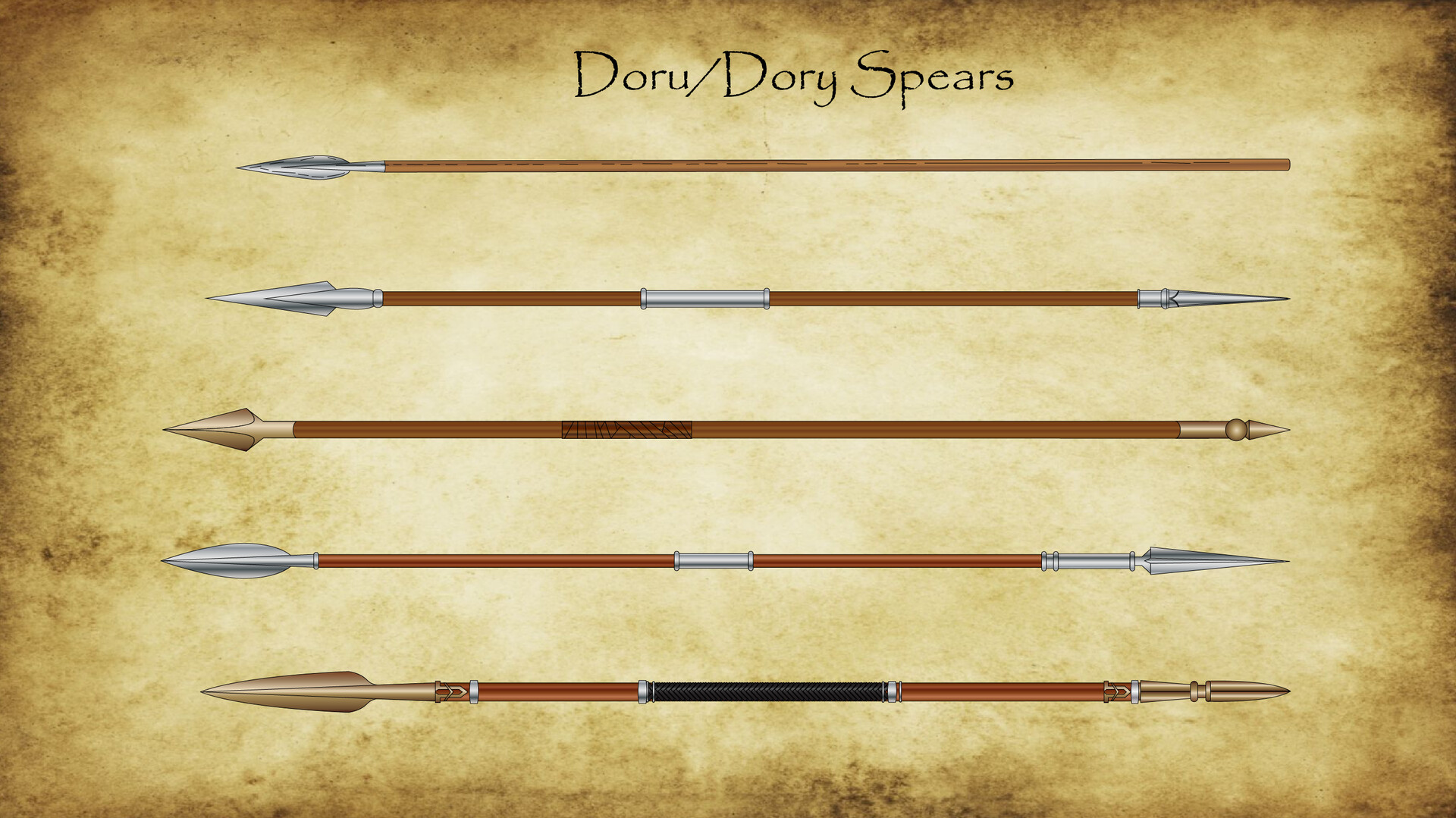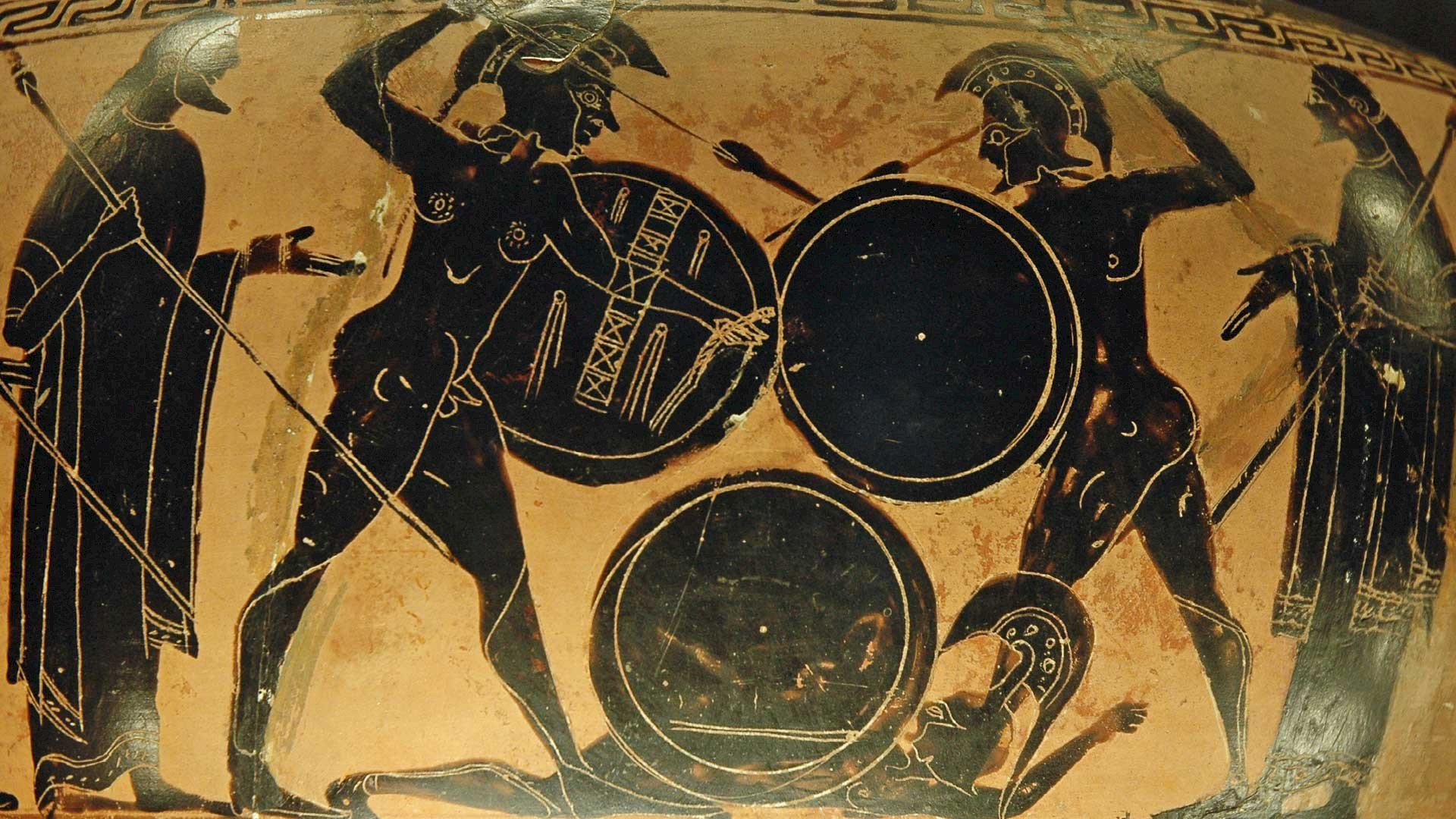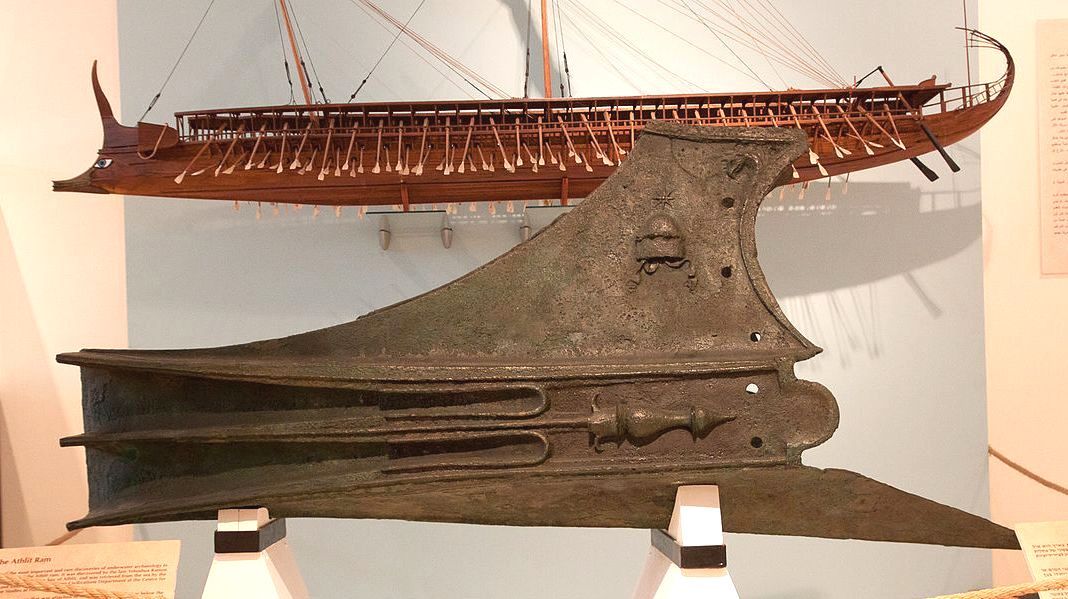It comes as no surprise that all civilizations have to make the right decisions in both times of peace and war to survive. Ancient civilizations were known not just for their innovations and inventions but their ability to wage war — and ancient Greece is no different. The Greeks were undoubtedly skilled in matters of war, as it was crucial for them to defend their culture and lifestyle from those that sought to take it away.
War is, unfortunately, a natural part of human evolution, and you can see it in the weapons and armor left by ancient civilizations. It’s always interesting to deep dive into an ancient civilization’s tools of war, and the Greeks had some of the best. Here are a few top examples of Greek weapons and armor.
The Xiphos

In most cases, the primary weapon of the Greeks was the spear. However, if the spear broke — which was quite common on the battlefield — they would use their trusty xiphos to help them stay alive. The xiphos is a double-edged sword that was usually built to be short yet durable. Due to its relatively small stature, the xiphos excelled in close-quarters combat.
It’s pretty similar to how the Japanese would use their weapons of war. While they had spears, if the spears broke, they would use their katana. The xiphos is arguably the most famous Greek weapon, as it saw plenty of use throughout the bloody battles fought by the Greeks. The xiphos was also a weapon favored by the Romans, which they used to great effect against the Greeks during the Roman conquest.
The Doru/Dory

Before the Greeks made use of the xiphos in battle, many of them first had their trusty dory to keep them safe. When it comes to spears, it’s understandable to think about large, hefty spears that you wield with two hands, such as the ones used by the ancient Chinese. However, the Greek dory was built specifically to be efficient — able to be wielded with one hand.
The reason why the spears were wielded with one hand was to ensure that the other hand could hold a shield. The ancient Greeks were molded by many bloody battles, teaching them how best to use weapons to keep from being killed on the battlefield. The Greeks had a habit of using the spear and shield combo, switching to the xiphos when the primary weapon gets broken or knocked out of their hand.
The Sarissa

While the dory was considered the primary weapon of the ancient Greeks, there were some areas in the Greek world that favored something much more significant. The sarissa got its start in Macedon, implemented by the father of Alexander the Great, Philip II. The sarissa was the cornerstone of the Macedonian Phalanx, a great wall of spears that was said to be impenetrable from the front.
Any enemy that decided to use a heavy cavalry charge against the Macedonians was in for a rough time, as the Phalanx was capable of stopping any charge in its tracks. In addition, the sarissa was 4 to 7 meters long — more than enough to keep the wielder safe. These specialized weapons were beneficial on open battlefields, which were a common sight in ancient Greece. While the Greeks didn’t use too much cavalry, they made up for it with tactics such as the Phalanx.
The Hoplon

The reason the ancient Greeks used the dory in battle was to ensure they had another hand free to hold a shield. In this case, the shield is called the hoplon, a heavy, durable shield about 1 meter in diameter and weighing upwards of 10 kilograms. These shields were so important to the Greeks that the foot soldiers wielding them were called hoplites.
While the hoplites were naturally bogged down by wielding such a heavy shield, what they got in return was an incredible amount of protection. Hoplites that were skilled with the shield didn’t have to worry about arrows, as they could easily protect themselves with the hoplon. The shield wall also made extensive use of the hoplon. In ancient Greece, it was considered a disgrace to lose your shield, which was often why the dead were carried on their hoplon.
Greek Fire

Greek Fire was perhaps one of the most innovative weapons the ancient Greeks ever conceived. The ancient civilization was known for their enlightened philosophy and arithmetic, and it seemed as though they used that knowledge to help protect their naval forces through Greek Fire. The formula used for Greek Fire was so secretive that no record of the formula exists today.
The formula of Greek Fire is still a topic of contention among scientists as they try to figure out what the ancient Greeks might have used to create such a concoction. The idea was for Greek war boats to spread the substance to enemy vessels, with Greek Fire having a habit of burning even when it touches the water. It was a destructive tool used by the ancient Greeks, which was partly the reason why their naval forces were such a force to be reckoned with.
The Ballista

The Greeks were known for developing tools that were well ahead of their time. In fact, some of their inventions still see use today! In the case of weapons and armor, one of the most prominent Greek inventions of the time was the ballista. The ballista was made to launch a deadly projectile at a target area, and it was so feared that the ballista saw use well into the Middle Ages.
It had a range of about 500 yards, which might not seem much now, but it was the bane of the battlefield when it was first introduced. It was so deadly that it was used by both Alexander the Great and his father to win many battles. The ballista was undoubtedly a marvel of its time, though it was known more for its destructive power on the battlefield than anything else.
The Dendra Panoply

Interestingly enough, while we have plenty of examples of Greek weaponry and innovation, there are very few examples of what the Greeks used to wear into battle. It’s an exciting topic for archaeologists and history buffs, as the best examples they can get of Greek armor comes from the vivid imagery painted on Greek pottery.
That said, there’s a single armor set — the Dendra Panoply — that was unearthed in a tomb. It showcased heavy bronze segments, and it was evident that the armor set belonged to an elite warrior. However, many pottery depictions showcase Greek soldiers with a similar design, which means the Dendra Panoply might be a little more commonplace than we think. Unfortunately, there isn’t enough information about Greek armor to make any solid assumptions. Nevertheless, the Dendra Panoply is an exciting look into how the Greeks tackled military armor.
The Claw of Archimedes

There are some stories about ancient Greece that seems so fantastical it looks like something out of mythology. However, the truth can be stranger than fiction, and in this case, the great Claw of Archimedes proves to be one of the very best examples of Greek ingenuity.
When the Romans attempted to lay siege at Syracuse — one of the most prominent Greek cities — the task of defending the city was given to Archimedes, known to be one of the greatest geniuses that ever lived. Archimedes fashioned a type of simple machine that was used to hook and topple ships that closed in on the city. The Claw of Archimedes worked so well that the Romans wondered if they were battling gods that day. Considering they besieged the city at night, it might have seemed like the hands of the gods themselves were toppling the ships.

Athens was known to be the philosophical center of the Greek world, and it was well-known for its many achievements and inventions. One such invention was the naval ram, which the Athenians used to significant effect — giving it one of the most effective naval forces in the Greek world. Not only was the naval ram highly effective at downing enemy ships by ramming into their sides, but it was also extremely agile.
The Athenians were the most successful of the ancient Greeks when it came to naval warfare, and the ram was the primary example. Unfortunately, despite their ability to tackle naval forces, the Athenians were not quite as skilled in ground battle, which was why they would see losses against the Macedonians. The naval ram is an example of Greek ingenuity at its finest.